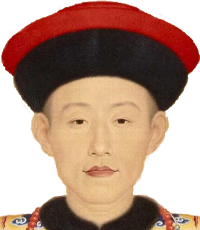2. China and East Asia
For much of its history, China was the all-dominant country in East Asia and international relations in this part of the world were more than anything organized by the Chinese and on Chinese terms. China itself was an empire, but the international system of which China was the center concerned the external relations of the empire — its relations with the rest of East Asia. In order to describe these relations the metaphor of a “solar system” is sometimes used. Here China is the sun around which other and far smaller political entities, located at increasing distances from the center, are circulating in their respective orbits. Some historians use the term “suzerainty,” referring to a relationship in which “a dominant state has control over the international affairs of a subservient state while the latter retains domestic autonomy.”
At the same time, there was a great difference in the way the Chinese dealt with neighbors to the north and west of the country and neighbors to the south and the east. The former relations were organized according to what we will call the “overland system,” and the latter relations according to the “tribute system.” The people to the north and the west constituted permanent threats. They were nomads who grazed their animals on the enormous steppes of inner Asia. Despite their economic and technological backwardness, they had access to the most advanced military technology of the day — fast horses — and in addition, they were highly skilled archers. Since the terrain was flat and since there were few natural obstacles in their way, it was easy for the nomads to raid Chinese farming communities. Occasionally they made it all the way to the capital itself. The imperial authorities always struggled with how best to respond to these threats, mixing defensive and offensive strategies, without ever finding a satisfactory solution. As a result, China was periodically invaded and two major dynasties were founded by tribes from the steppes — the Yuan, 1271-1368, which was of Mongol origin, and the last imperial dynasty, the Qing, 1644-1911, which was Manchu.
As far as China’s relations with countries to the east and the south were concerned, they were far easier to manage. Since the Himalayas effectively blocked any invasion from the south, there were no military threats from this direction and instead, communications took place across the ocean. From Korea, Japan and states throughout Southeast Asia, the Chinese emperors demanded tributes. The foreigners were required to make the journey to the Chinese capital at regular intervals and present gifts to the emperor. In this way, the Chinese were confirmed in their view of themselves. They really were the country at the center of the world — the “Middle Kingdom” — to which all human beings paid tribute.















